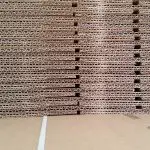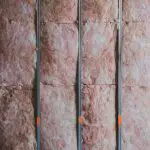
Plexiglass vs glass soundproofing, which is better? This question creates a dilemma, especially when you are in the planning stage. In this post, I will share with you the difference between these materials. I hope this helps.
Choosing which soundproofing material you should be using for your project is sometimes difficult. This challenge usually arises especially when you have no idea of the materials’ capacity and characteristics.
When it comes to soundproofing windows, there are a number of materials you can choose from. Quite often you’ll see people use plexiglass for soundproofing, as well as regular glass panels.
However, choosing one of the materials can be challenging. This happened to me before, I wonder, plexiglass vs glass, which is better for soundproofing?
Well, technically, neither of these two materials are designed for soundproofing. But, certainly, they can both help with soundproofing, and one may be better than the other, depending on the purpose of the project.
For one thing, it depends on the project. Are you trying to soundproof your bedroom window from outside noises? Are you trying to block internal noise between rooms? Are you trying to create a sound barrier between one source (like a drum set) and other areas (like the rest of your house)? These situations each have different requirements, but we’ll approach them in a similar way – which material is better in general at soundproofing, while not blocking your visibility – plexiglass or glass?
Before we begin, I should point out that plexiglass is a generic term used to describe acrylic plastic sheets. When it was invented, they trademarked the name Plexiglas (capital P, only one s), but plexiglas has become a generic term, like Kleenex. There are other trademarked names, like Lucite, for the same material. It’s all just acrylic plastic sheets.
Table of Contents
Is Plexiglass a Good Sound Barrier?
Plexiglass is a good sound barrier, and the preferred choice of audio engineers.
Have you noticed when musicians perform live, that the drummer is often behind clear panels? Those are called drum shields, or drum screens. Those shields are designed and placed by professional audio engineers, to avoid the sound control problems caused when louder instruments overwhelm quieter instruments and vocals on stage, and in the studio. And, they’re made of acrylic plastic, like plexiglass. They sometimes use special scratch-resistant acrylic, but the important point is that they are acrylic, not glass.

As you can see, professionals prefer plexiglass for soundproofing over glass sound barriers.
(While plastic drum screens perform fairly well as sound barriers, they are not very good at soundproofing. They reflect most sound that strikes them, so very little sound is actually absorbed. The rest of the sounds is reflected (bounces back). That’s why you may also notice sound absorbing panels behind and to the sides of those drummers on stage and in studios.)
There are many other positive aspects of plexiglass as a sound barrier. Another major factor is durability. Returning to the live musical performance example, those drum shields see a lot of bumping, and probably dropping as well, as they’re moved around a lot while loading and unloading. Plexiglass panels can easily withstand that abuse, only suffering an occasional scratch, rather than breaking.
Another important factor is affordability. Since plexiglass is inexpensive, that means that you can easily apply multiple layers if you need it.
These are just a few differences between plexiglass and glass materials. But there are more differences than price and durability. If you want to learn more, you can read further.
Plexiglass vs. Glass soundproofing: What is the difference?
In terms of durability, plexiglass is stronger and more resistant to shatter and erosion than glass. The glass, on the other hand, is scratch-resistant and can be easily recycled. If you consider the environmental factors, then using glass is a good idea.
Plexiglass and glass differ in many ways. These materials further differ in;
Composition
Plexiglass is a transparent thermoplastic, a type of clear acrylic sheet. It is, therefore, a plastic material based on petroleum products.
A glass, however, is a non-crystalline inorganic compound that undergoes a cooling process without going through a crystalline state. Obviously, glass is brittle.
Resistance to Scratching and shattering
Both plexiglass and glass have strengths and weaknesses. Glass is more resistant to scratches than plexiglass, but is it much easier to shatter.
Plexiglass, on the other hand, is more resistant to shatters, but more prone to scratches. Another problem with plexiglass is that it tends to crack when exposed to some cleaning solvents. So you need to be careful when cleaning it.
Weight
Plexiglass is more lightweight than a glass. Weight makes the plexiglass easy to handle and install. You can easily work with it alone.
Cutting
A sheet of plexiglass is far easier, and safer, to cut than a glass sheet. Plexiglass also is easier to shape according to your desired shape and design. Cutting glass is considerably more challenging than cutting plexiglass. Glass edges are much sharper than plexiglass, so the likelihood of you injuring yourself when cutting glass is much higher than when cutting plexiglass. Secondly, the glass is much easier to break in the process of cutting and moving it, potentially adding to the cost and effort in making your window. It’s more difficult to get a clean cut on glass, without breaking off a corner, or leaving an uneven edge.
Recycling
The good thing about glass, however, is that it can be easily recycled. It’s more difficult to recycle a plexiglass sheet, since it is not a standard recyclable. This is because plexiglass contains petrochemicals. This means that glass materials are more eco-friendly than plexiglass.
Many recycling services do accept reusable construction materials, however – it just takes a bit more effort to recycle than the curbside pickup recycling that’s available for glass.(On the other hand, if you’re installing soundproofing for permanent use, the recycling issue is not relevant.)
Soundproofing Using Glass and Plexiglass
When soundproofing, there are many factors you need to remember in order to successfully carry out the project. The following are important things to consider:
1) Mass
The success of any soundproofing project relies on many factors. One being is the mass of the material being used. The denser the material, the more capable it is of reducing sound transmission.
In this case, both glass and plexiglass are good at blocking sound. They come in different thicknesses, which allows you to choose the best option for your soundproofing project.
2) Absorption
Absorption is the capability of a soundproofing material to absorb sound. (Technically, sound absorption is transforming sound into heat, but that doesn’t matter, except to clarify the difference between sound absorption and sound damping.)
Softer materials do a better job at absorbing sound than harder ones. Therefore, both plexiglass and glass are not particularly good sound absorbers.
The plexiglass, however, because it is a bit softer than the glass, has a somewhat better absorption capability than the glass. But of course, it cannot totally absorb sound.
3) Damping
Sound damping refers to decreasing the sound by either absorption or by reflection – basically, bouncing the sound in a different direction to where it was originally going. When it comes to dampening sound, plexiglass is better than glass. This is because the glass is resonant. (Glass has a natural resonant frequency—the speed at which it will vibrate if disturbed by a sound wave. Glass is naturally very resonant, so a glass window will also be resonant. This will be more pronounced at certain frequencies. Plexiglass, on the other hand, is softer, making it more capable of dampening sound.
4) STC Rating
The Sound Transmission Class (STC), is a unit of measurement indicating how well soundproofing material blocks sound transmission. The STC rating is the average amount of noise stopped at 18 different frequencies, measured in decibels. The higher the STC rating, the more effective the material is at blocking the sound.
Every material has its own STC rating. STC rating goes from 20 – 65, 25 and lower being low or no soundproofing, while 65 and above is considered soundproof, where no noise can penetrate. A standard single-pane window would have an STC rating of 25, while most “soundproof” products have an STC rating in the range of 35-55. With an STC of 25, the material does a poor job at blocking or absorbing sound transmission. If you’re using a material like this, you can clearly hear a speech or noise from the other side of the material.
An STC of 40 is better than an STC of 25, of course. At this rating, although the sound can still penetrate, you’ll only hear like a murmur from a loud speech or noise from the other side of the material.
An STC of 50 is good when soundproofing music studios. A material that has this rating has an excellent capability in absorbing and blocking the sound or noise. If you want to make your room completely quiet, then choose a material with an STC rating of 50 or higher.
Plexiglass vs Glass Soundproofing in Terms of STC Rating
In terms of the STC rating, glass is slightly better than plexiglass. For instance, a ¼” glass pane has an STC rating of 31. While the plexiglass of the same thickness has an STC rating of 29.
The two-point difference does not make any significant difference in their use as sound barriers. But as the material gets thicker, the more pronounced the difference between glass and plexiglass becomes.
A glass pane with ½” thickness has an STC rating of 36. While the plexiglass with the same thickness has an STC rating of 33. The difference is even bigger as the material gets thicker and thicker. As you can see, glass consistently has a higher STC rating than plexiglass. However, neither of them is a particularly good soundproofing material, at least in a single pane. Adding a second pane significantly improves the soundproofing, as does the dead space in between the panes.
5) Price
Price is another important factor that could affect your soundproofing material choice. If you have a limited budget for your project, you probably want to choose plexiglass over a glass.
Plexiglass is cheaper than the same size of glass material. Choosing the plexiglass allows you to have multiple layers that maximize the effect of the material, with “dead air” in between.
But if budget is not a problem, then you can choose glass over plexiglass, since glass is more effective in blocking the sound than the softer plexiglass.
6) Durability
When it comes to soundproofing, you want a material that is both effective and durable. No one wants to re-soundproof a room over and over again. However, in a place where the window will not be subject to likely breakage, this really isn’t an issue. Both glass and plexiglass are very durable, unless something hard hits them.
Can Plexiglass Block Sound?
Although plexiglass has a lower STC rating than glass, it can still block sound. Because it is cheaper, you can still achieve your desired soundproofing result by implementing layers of installation.
The good thing about plexiglass is that, aside from being affordable, it is lighter and easy to install. You don’t have to worry about it shattering because this material is durable and shatter-resistant.
It is perfect for beginners. You can experiment with this material. Unlike the glass that offers limited flexibility in terms of installation, the plexiglass gives you the opportunity to implement your own design.
Best Alternatives to Plexiglass and Glass
In terms of soundproofing materials, plexiglass and glass are not the only things you can use for noise reduction. In fact, there are other materials that could also perform the soundproofing task.
Some materials don’t need any expertise to install them. Below are some of the alternative soundproofing materials you can use for your project.
1) Soundproof Curtains

Soundproof curtains are some of the easiest materials you can use to soundproof a room. The best thing about using these materials is that they are super easy to install, non-permanent, and they do a very good job of blocking the sound.
If you want a quick solution to the noisy traffic or neighbor, try soundproofing curtains (check my favorite one on Amazon). Soundproof curtains are inexpensive. And because they come in different colors and sizes, you can choose the best one for your project.
Check out our recommended soundproofing curtains on Amazon, and see the difference in sound levels when using one or two layers of curtains – it’s pretty amazing.
2) Window Blinds
As an alternative to soundproof curtains, soundproofing window blinds (check the product on Amazon) are also good at soundproofing windows, if you choose the right material.
Window coverings are not entirely soundproof, but the top window treatments that will reduce exterior noise are those that insulate the best, like double cell honeycomb shades. The best soundproof blinds include honeycomb cell shades and even window shutters. You’ll be surprised how much noise dampening you can get with these shades made of soft pleated polyester. Those pleats act much like the pleats in the soundproofing curtains, and the “egg-carton” panels used in professional recording studios.
Like soundproof curtains, window blinds are also easy to install and you do not need to be an expert to do it. You just need to install it like a regular window blind.

Soundproofing window blinds are affordable. An added benefit is that they do not just block sound – they also block light or heat (and cold).
Final Thoughts on Plexiglass vs Glass Soundproofing
It is clear that both plexiglass and glass have both strengths and weaknesses. When it comes to soundproofing capability, the glass has a slightly higher STC rating. This means that the glass is a slightly better soundproofing material compared to plexiglass.
However, the plexiglass is cheaper and more resistant to shattering than glass material. This means that you can buy more to implement multiple layers on the project, with “dead air” in between. This way you’ll still be able to achieve better results.
Finally, since plexiglass is also more resistant to breakage, it can be used as a transparent sound barrier to reduce noise levels and increase safety at the same time. To me, that makes the choice much more obvious. Plexiglass soundproofing is the better alternative, for most cases.
Professional sound engineers use plexiglass sound barriers. So, that would be my choice for soundproofing panels as well.
I hope you find this article helpful. If you want to learn more about soundproofing, feel free to visit my Soundproofing Guide. Happy soundproofing!






